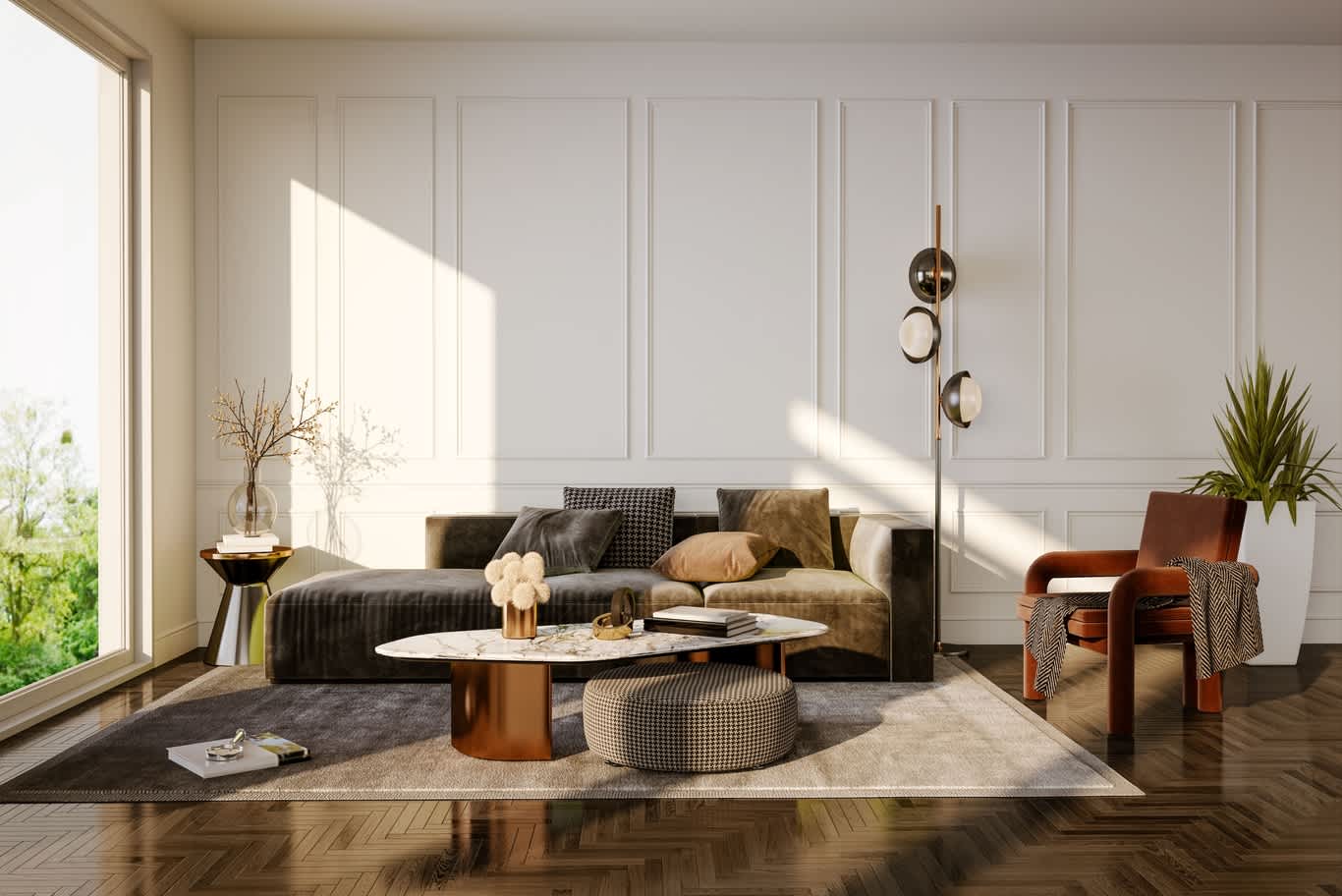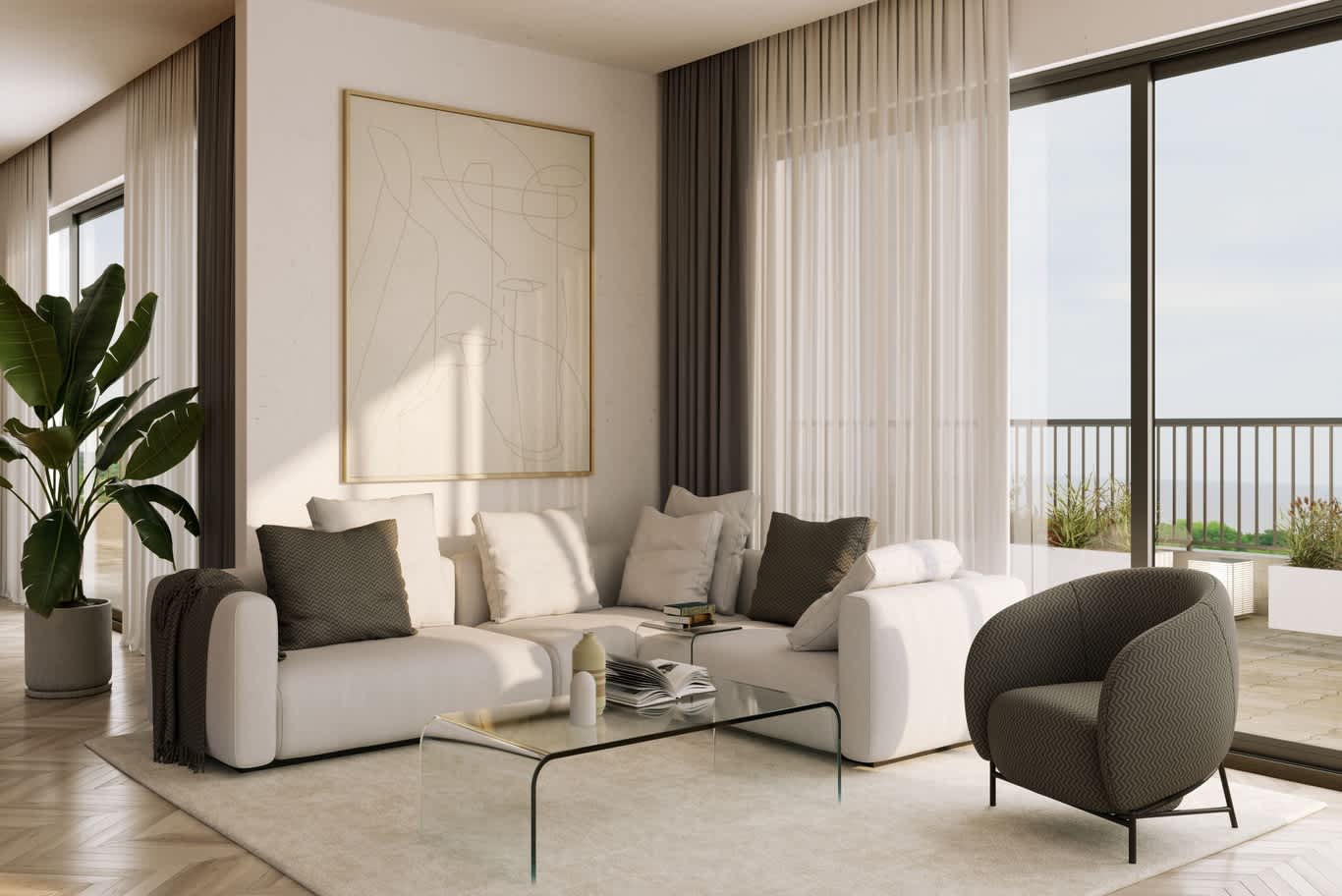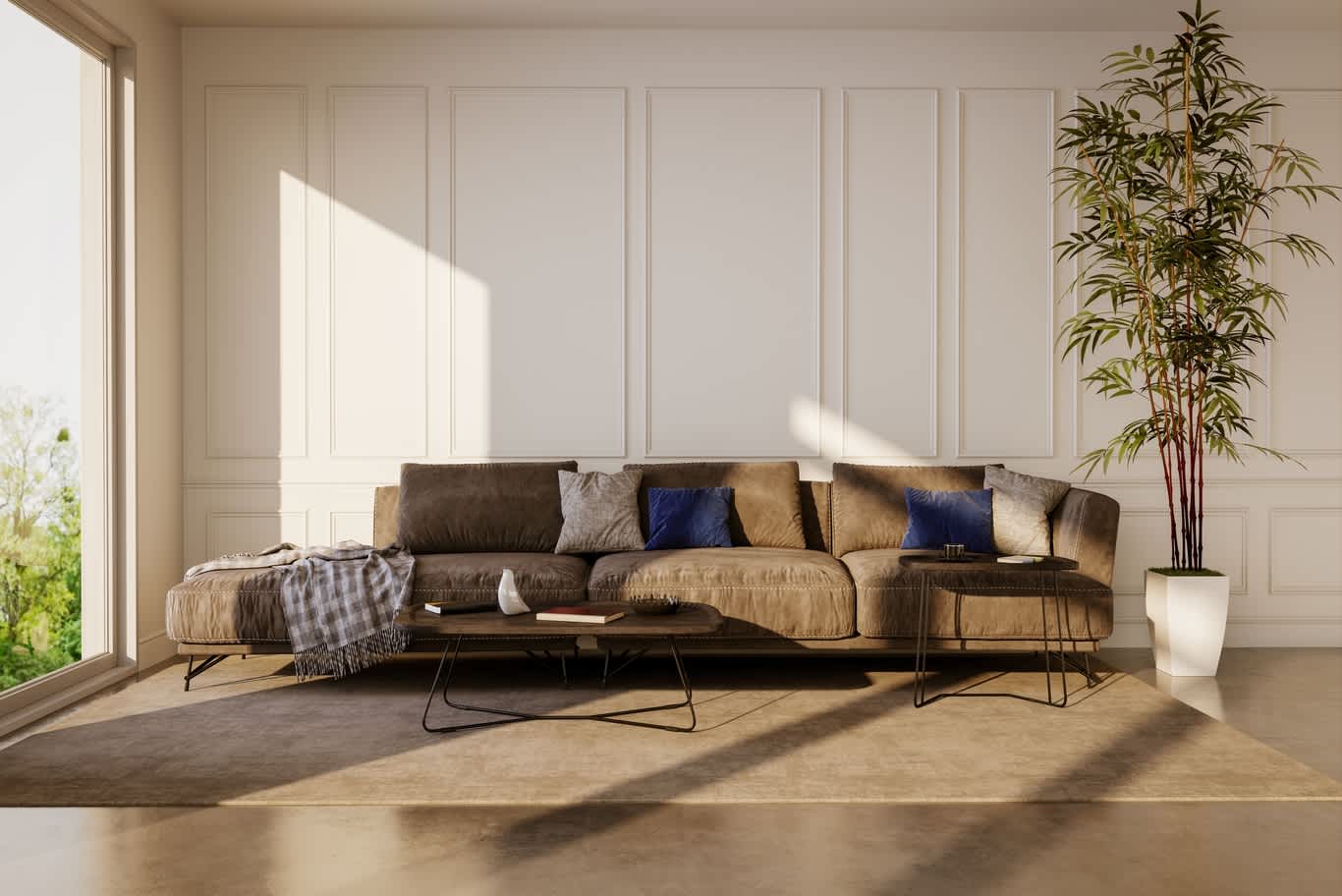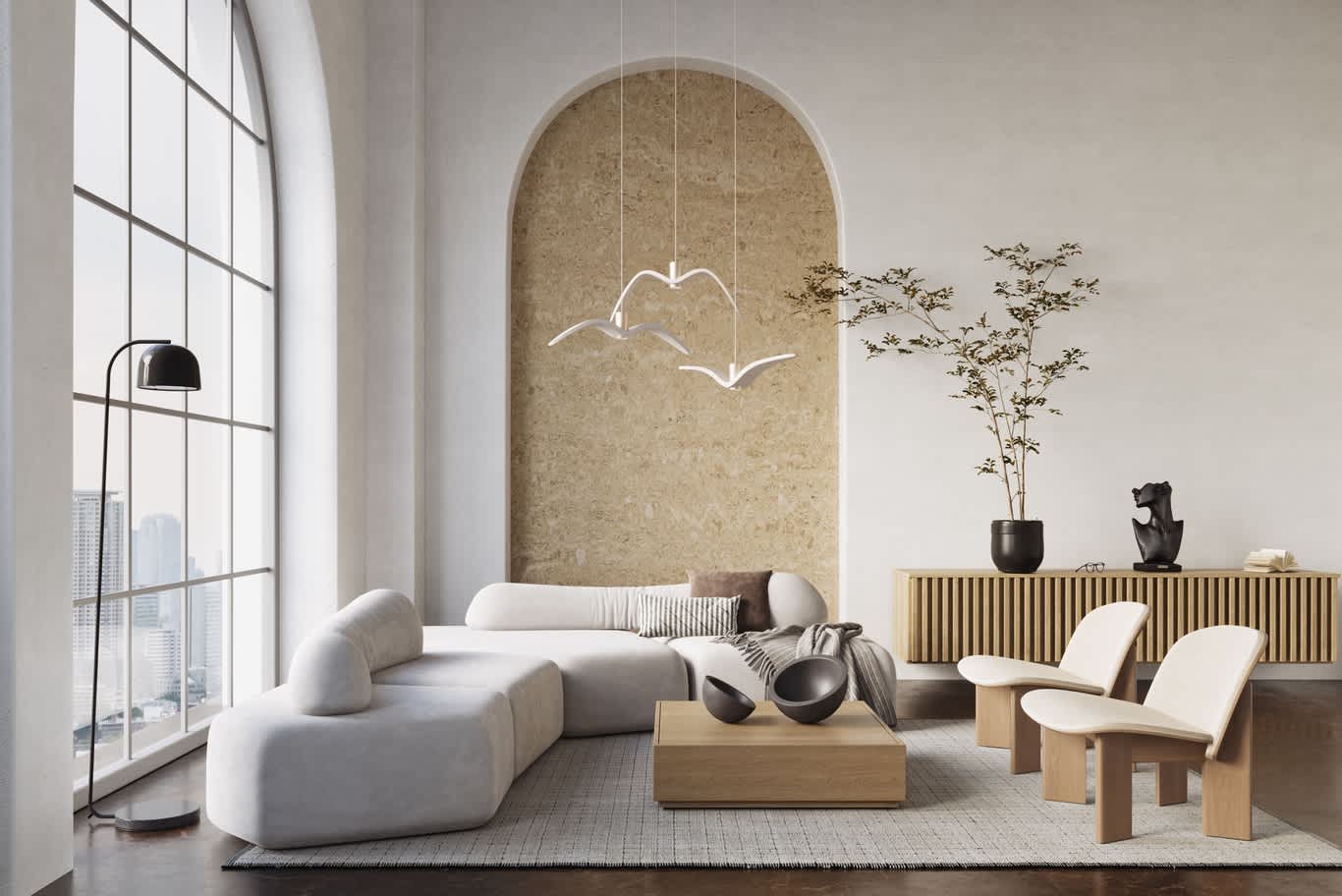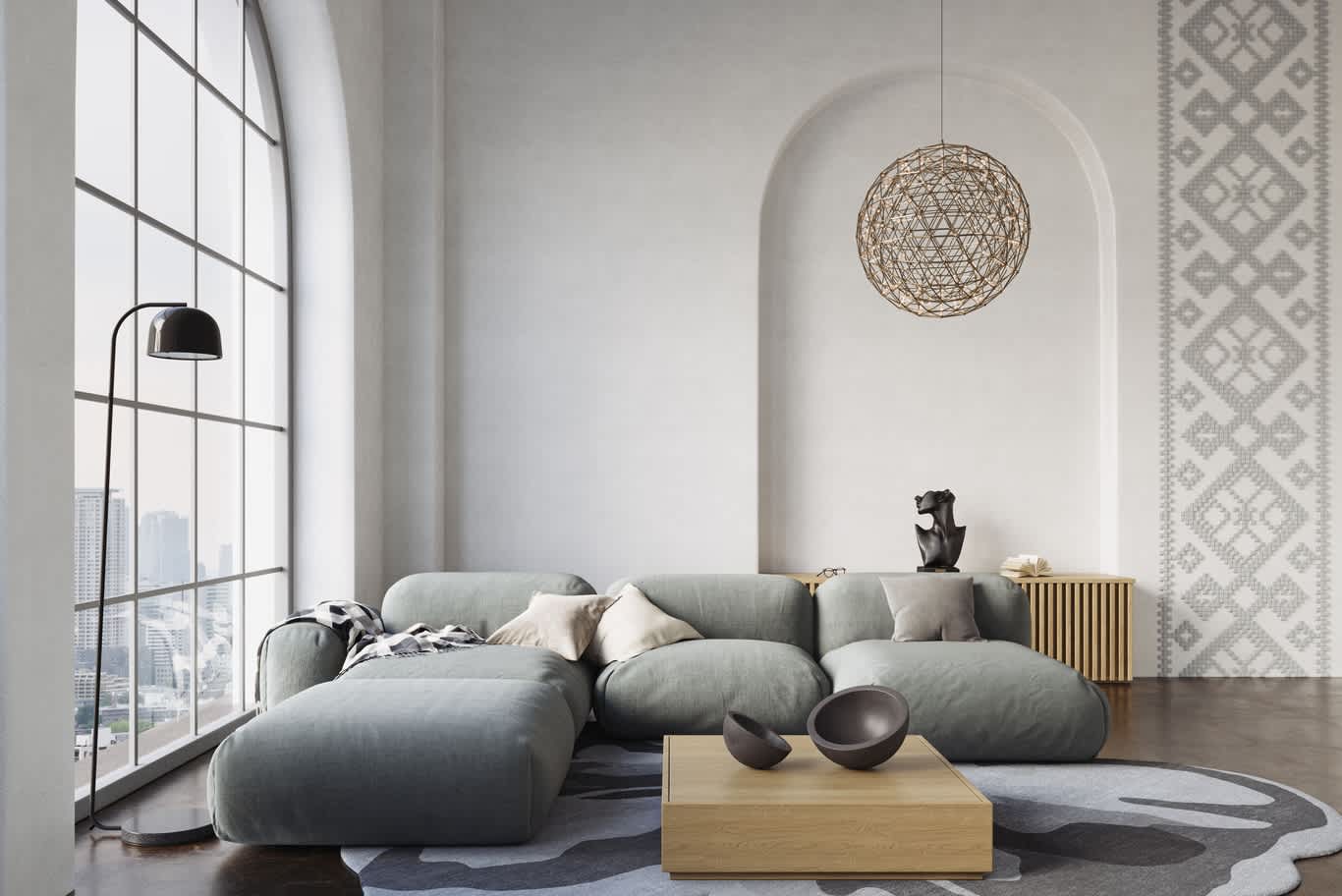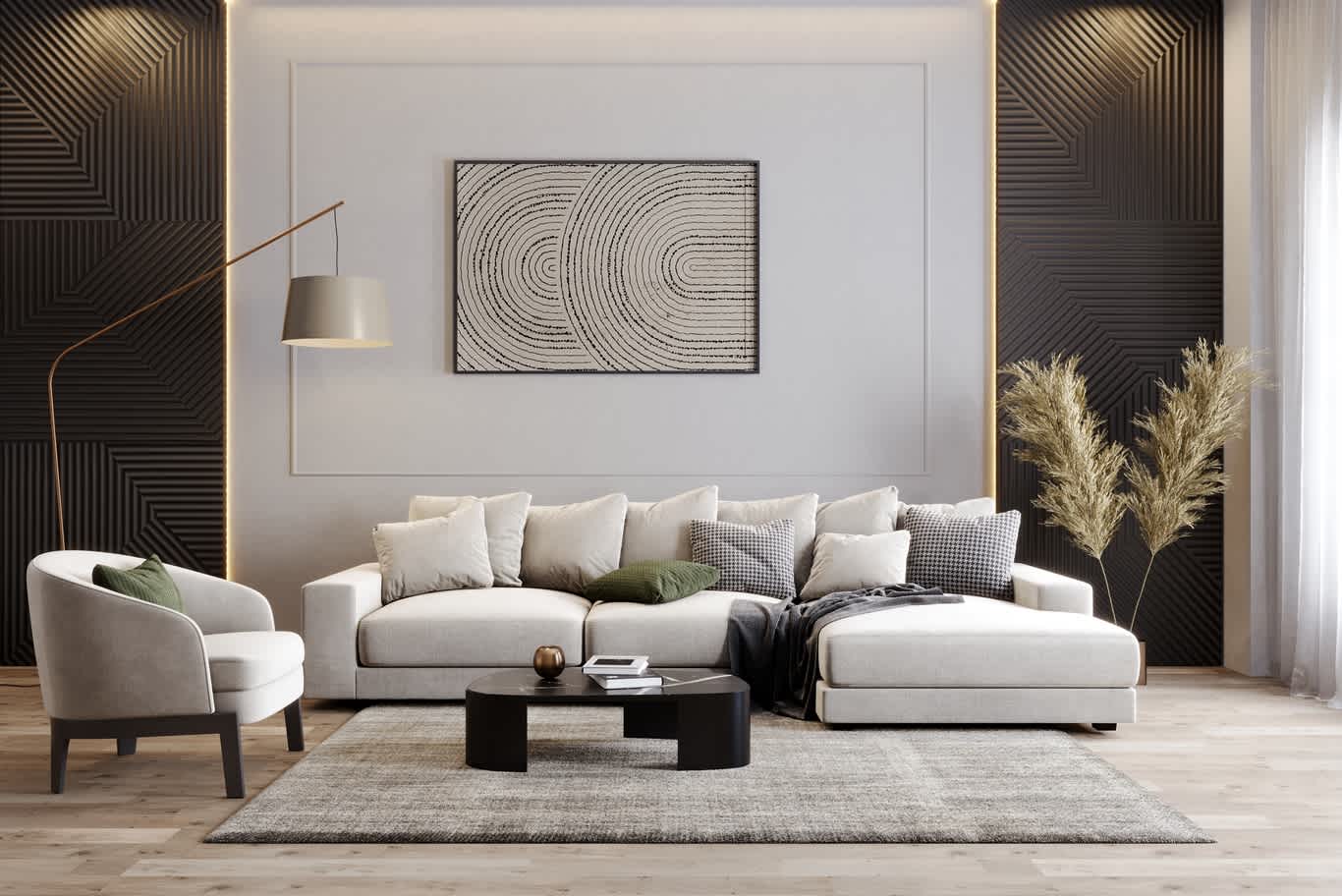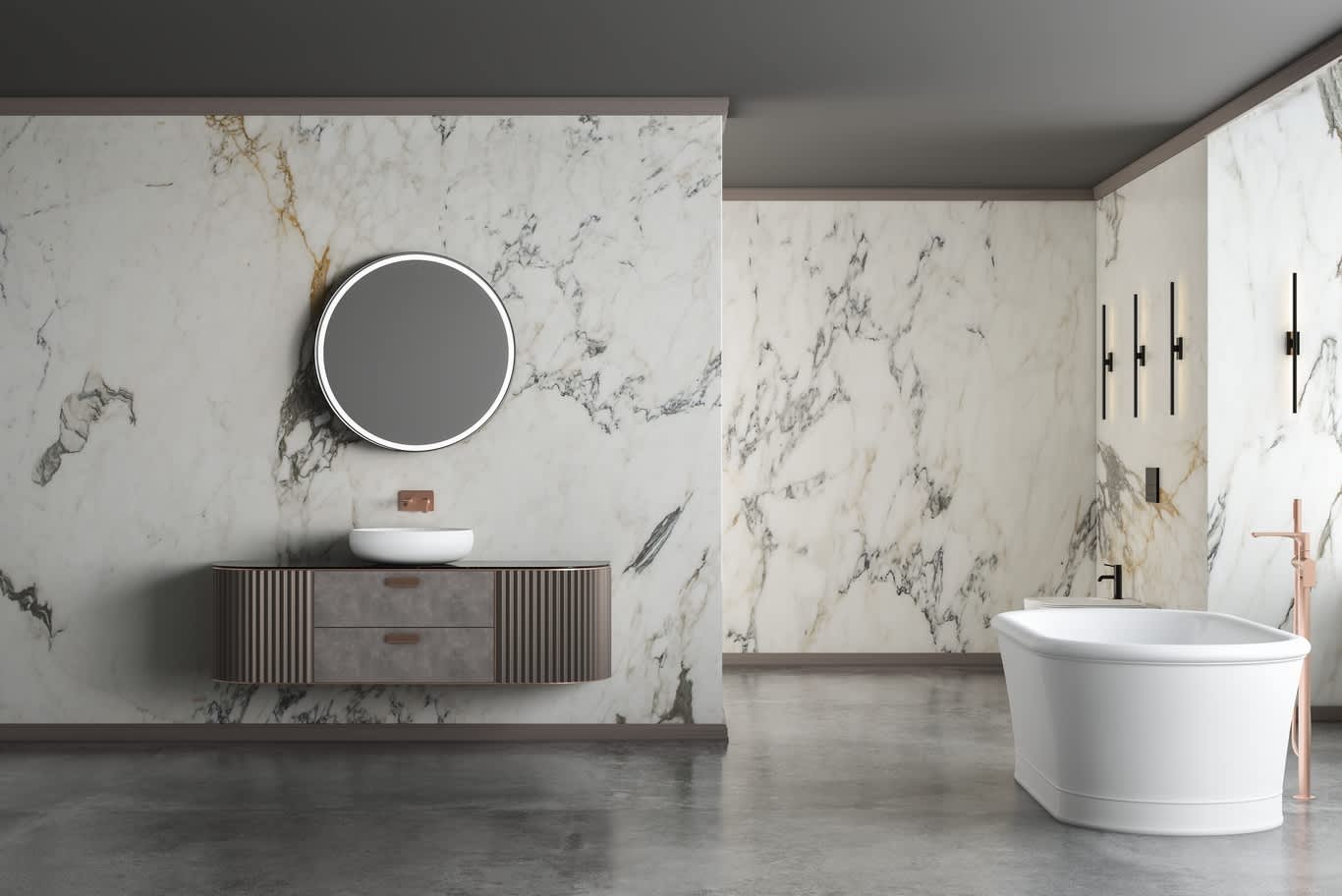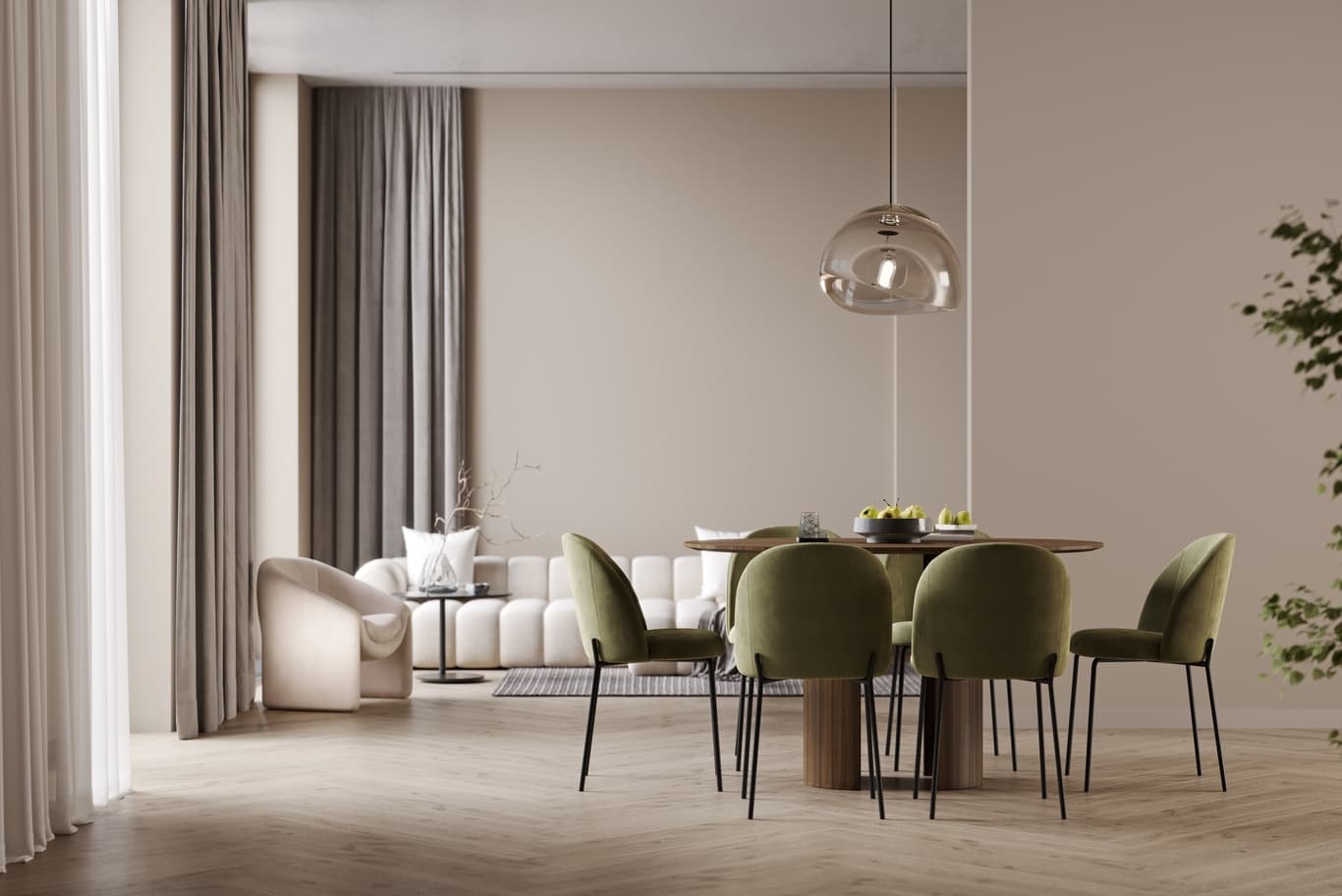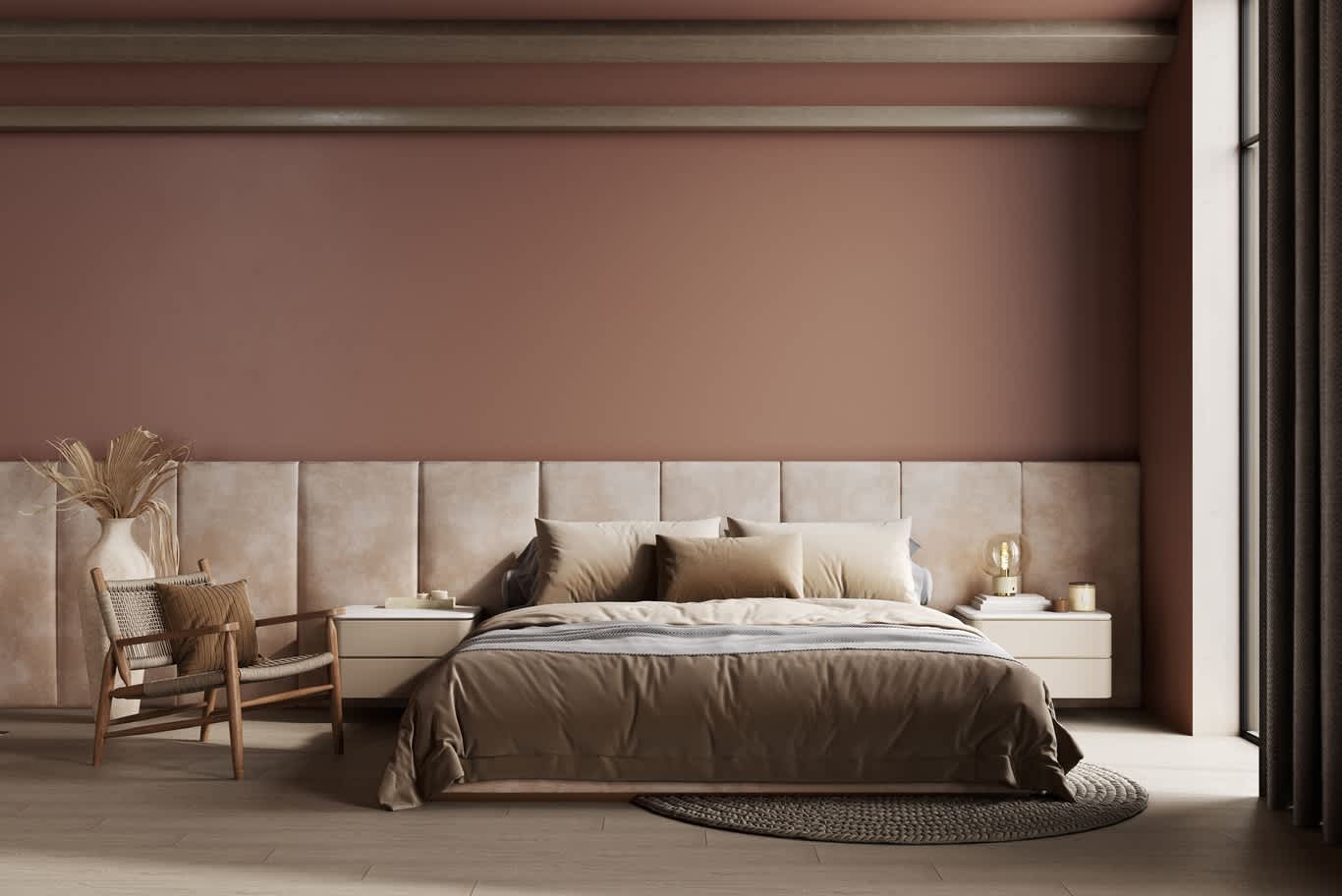Home Page | Blog | 10 Creative Design Ideas for Interior Projects
10 Creative Design Ideas for Interior Projects
7/11/2025
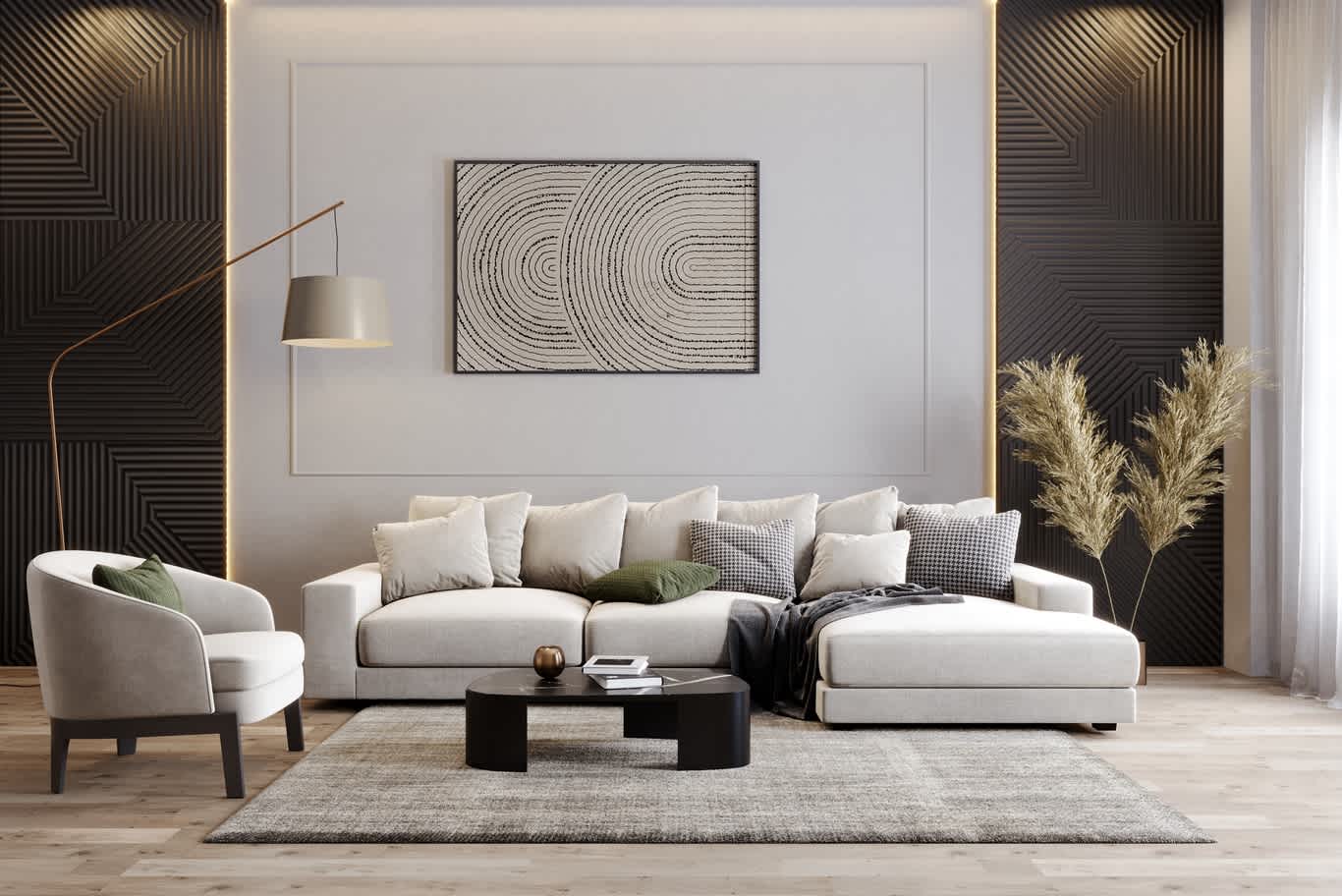
Looking for creative interior design ideas that actually work in real projects?
This guide provides practical design solutions used by professionals to improve space functionality, layout efficiency, and material flow in residential and commercial interiors.
Whether you're designing a small apartment, a luxury villa, or an office fit-out, these ideas include zoning techniques, lighting concepts, storage integration, and ceiling treatments—all explained with clear examples that can be applied directly during planning or execution phases.
1. Use Material Transitions to Zone Spaces
Material transitions are more than aesthetic—they define usage. In open-concept interiors, changing flooring materials between adjacent zones helps divide function without introducing partitions.
Common applications:
● Kitchen floors in porcelain tiles (for durability and water resistance), directly meeting engineered timber in dining areas
● Microcement in bathrooms flowing into wood-look tiles in bedrooms
● Carpet inset in office waiting areas with marble tile around the perimeter
Construction detail:
Always match substrate build-up for flush finishes. Use movement joints where different materials meet, particularly between wet and dry areas.
Why it matters:
This avoids visual monotony and enables subtle functional zoning that clients immediately feel—even if they don’t see it consciously.
2. Define Spaces with Ceiling Changes
Ceiling height changes are an effective architectural move when working with unified layouts. This can help mark spaces clearly, particularly where furniture boundaries alone are insufficient.
Common ceiling strategies:
● Lowered ceilings over kitchen islands or bar counters (dropped by 150–200 mm)
● Framed tray ceilings in master bedrooms to introduce dimension
● Coffered ceilings in dining areas with integrated indirect lighting
Execution tip:
Coordinate with MEP drawings. Dropped ceilings must accommodate HVAC ducts, electrical conduits, and fire systems.
Benefit:
This technique controls volume perception and can influence acoustics, lighting strategy, and spatial rhythm without increasing built form.
3. Plan Lighting in Three Layers
Lighting should be incorporated into the early concept stage—not added post-layout. A well-planned lighting design makes spaces more usable and improves the experience of materials and color.
Three lighting layers:
● Ambient lighting – ceiling-mounted LED strips or indirect coves that provide general brightness
● Task lighting – spotlights or pendant lighting above desks, counters, or mirrors for practical use
● Accent lighting – wall-washers, shelf strips, or floor uplights that highlight finishes or art.
Avoid:
Mixing 3000K and 4000K in the same visual field. Standardize color temperature room by room.
Design value:
Layering light creates flexibility and gives each zone multiple functions—relaxed evening setting vs focused task work.
4. Install Floor-to-Ceiling Joinery
Floor-to-ceiling storage eliminates visual noise from standalone furniture and maximizes vertical volume—especially in urban homes.
Applications:
● Wardrobes: Full-height sliding or hinged units with interior LED sensors
● Kitchen tall units: Pantry or utility integration into a single seamless unit
● Corridor joinery: Cleaning storage, electrical panels, or linen storage behind flat panels
Detailing standards:
● Minimum carcass depth: 600 mm for wardrobes, 400 mm for shelves
● Material options: MDF laminate for budget builds, wood veneer or painted lacquer for high-end projects
● Integration: Use shadow gap profiles or inset plinths for clean floor junctions
Why it works:
It visually raises the ceiling height and removes the clutter created by short, freestanding items.
5. Build Concealed Doors and Panels
Hidden doors are ideal for secondary rooms such as guest bathrooms, staff quarters, or services rooms.
Build method:
● Concealed hinges (Simonswerk, Salice) with flush door leaf
● Use magnetic locks or push-to-open systems
● Match wall and door finish for a unified visual plane
Construction detail:
Flush doors should maintain 3–5 mm reveals. Paint or finish both door and wall in the same material batch to prevent tone mismatches.
Why this matters:
The visual result is cleaner and contributes to minimalist spatial planning, especially in narrow corridors or enclosed layouts.
6. Recess Storage into Wall Cavities
Recessed storage optimizes wall thickness, especially in compact apartments and bathrooms.
Examples:
● Bathroom niches inside showers: use waterproof backer boards and tile same as wall
● Hallway wall displays: drywall cutouts with shelf LED lighting
● Kitchen niches: Built-in knife slots or oil holders next to cooktops
Execution caution:
Verify structural wall thickness. Avoid recesses in load-bearing walls without structural review.
Design impact:
Improves spatial economy while offering focused zones for function or display, avoiding protruding elements.
7. Integrate Seating Into Architectural Elements
Built-in seating solutions are useful in both residential and hospitality design.
Applications:
● Dining benches integrated into kitchen islands
● Window seating in bay or corner windows
● Reading corners created under stairs or at corridor ends
Technical data:
● Seating height: 420–450 mm (including cushion)
● Depth: 500–550 mm minimum
● Cushion density: 30–35 kg/m³ foam for durability
Why use it:
Reduces furniture clutter and gives clients multi-use areas that visually connect to the space.
8. Design Bathrooms for Simplicity and Function
Effective bathroom layouts prioritize utility, ease of cleaning, and long-term durability.
Recommended details:
● Floating vanities to expose floor for easier cleaning
● Wall-hung WC with concealed cistern (minimum 110 mm stud wall depth)
● Integrated lighting: backlit mirrors, under-cabinet LEDs, and cove lighting in niche walls
Tile guideline:
Use large-format tiles (e.g., 60x120 cm) with matching grout to reduce visual breaks.
Value to client:
Improved hygiene, better space feel, and easier daily routines.
9. Use Built-In Lighting Details
Integrated lighting elements give architectural hierarchy and reduce visual clutter.
Best placements:
● LED strips under cabinets, inside wardrobes, and along stair edges
● Recessed channels along ceiling perimeters or wall edges
● Built-in vertical uplights behind curtains or panels to wash textured surfaces
Technical tip:
Choose CRI >90 for color accuracy. Avoid bare LED strips; use diffusers and extrusion profiles.
Why it’s effective:
Keeps the design cohesive and removes reliance on exposed fixtures or ceiling spot clutter.
10. Coordinate Joinery and MEP Early
Design teams often face project delays due to poor coordination between millwork and mechanical systems.
Early steps:
● Confirm HVAC diffuser sizes and positions before ceiling details are finalized
● Leave service access panels inside tall joinery for electrical and HVAC maintenance
● Plan for power sockets and switches inside drawers or cabinets
Key coordination tools:
Use BIM or CAD overlays between MEP and joinery drawings before issuing for tender.
Why it's critical:
Saves rework cost and prevents on-site conflicts during installation.
Related Resource →
Read now → 7 Most Common Mistakes in Interior Design
Avoid errors during layout, material selection, and construction stages.
Final Notes
Creative interior design is about efficient planning, not visual gimmicks. These ideas reflect how experienced professionals improve layouts, integrate systems, and manage space constraints. Each section in this guide offers insights that support early planning, technical coordination, and seamless execution.
Need help on your next project?
Our team supports full-scope interior design, documentation, and site coordination. From concept to construction, we work across residential, retail, and commercial environments.
FREE
CONSUL
TATION
FREE CONSULTATION
TELL US ABOUT YOUR PROJECT
WE WOULD LOVE TO HEAR FROM YOU
Feel free to reach us via this contact form and one of our Design Consultants will get back to you at earliest.
OUR BRANCHES
UAE - DUBAI
+971 52 8111106 | hello@algedra.ae
TURKEY - ISTANBUL
+90 533 701 89 71 | info@algedra.com.tr
Leading Interior Design and Decor Company in Dubai and Abu Dhabi.
Algedra is a reputable, internationally recognized, and one of the most successful interior design companies in Dubai, and Abu Dhabi, which specializes in delivering interior design, architectural, and creative space planning projects throughout GCC, MENA, North Africa, Turkey and Russia.
Algedra is a one-stop solution for all your residential interior design and fit-out needs. We have successfully completed numerous villa interior and exterior design projects, where we integrated quality and originality to deliver interior masterpieces.
ALGEDRA, Interior Design Company in Dubai, is specialized in providing elegant and stunning interior design services for both residential and commercial projects. We turn our clients' dreams into reality, trans- lating their tastes and needs into beautiful and functional spaces.
Since the day we were founded, we have designed and built many branded residences, resorts, hotels, multi-purpose social spaces, and palace designs with different functions and concepts by following the ever-changing design trends over the world.
A key element of our work is a fusion of different cultures and designs, combining Greek, Italian, Eastern and Western influences with British innovation.
As a team of highly qualified interior designers and engineers, Algedra offers complete architectural services from mall design to corporate office design as well as the exterior design of any project based on customers' needs.
Our customers include leading names, we have completed diverse projects in hospitality, landscape, commercial, and residential designs. These projects contain cafes, restaurants, gym, villas, family sitting rooms, bedrooms, kitchens; all showcasing our company's exquisite details and high-end designs.
Residential Interior Design in Dubai
Algedra's interior designers and architects have an important mission: building villas, houses, apartments, condos, and anywhere else where you reside that will fulfill your needs while being structurally safe and sound.
Architectural Designs
There are so many details that go into designing an architectural design project. Every step of the project has been carefully considered for safety and daily comfort by Algedra's experts.
Commercial Design
Conceptualizing spaces for business, to elevate style, and to increase functionality to help enhance the bottom line of a company is vital, as well as employee comfort and interior design too. Our commercial interior designers translate client's concept in ways that are efficient, attractive and provide professional workspaces.
Fit-out Projects
Algedra Interiors delivering high-quality tailored fit-out projects that transform your villas, palaces and commercial spaces.
We're a passionate team of interior designers, architects and engineers. Every day we help clients to solve interior design problems and create engaging spaces!
Wherever you are in Kuwait, Saudi Arabia, Azerbaijan, Qatar, Morocco, Algeria, Tunisia, Libya, Egypt; don't hesitate, contact us to find out more about why we are one of the best interior design companies in Dubai and Abu Dhabi!
